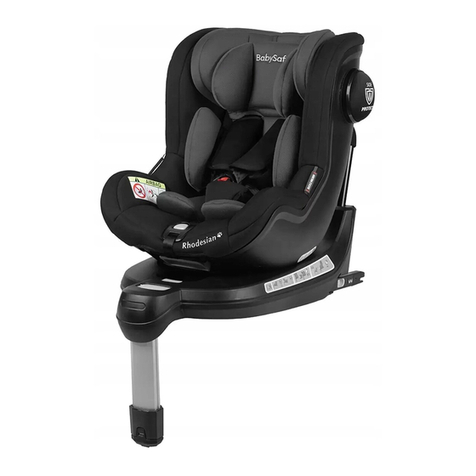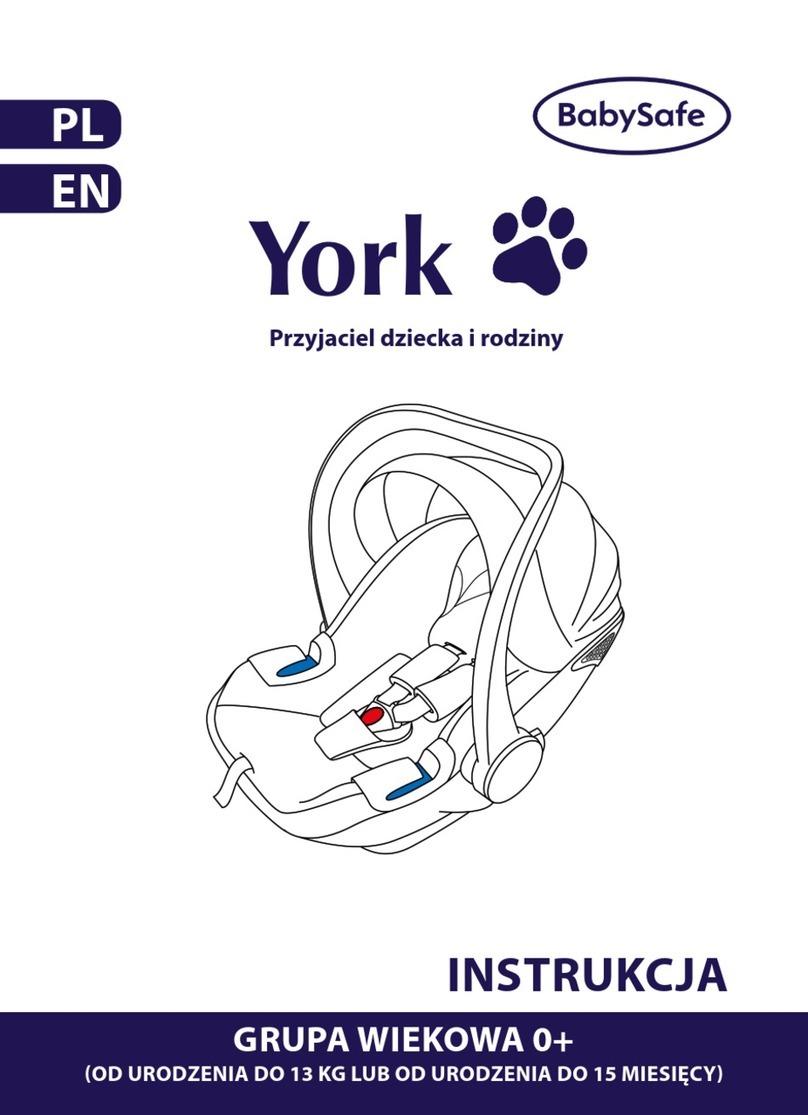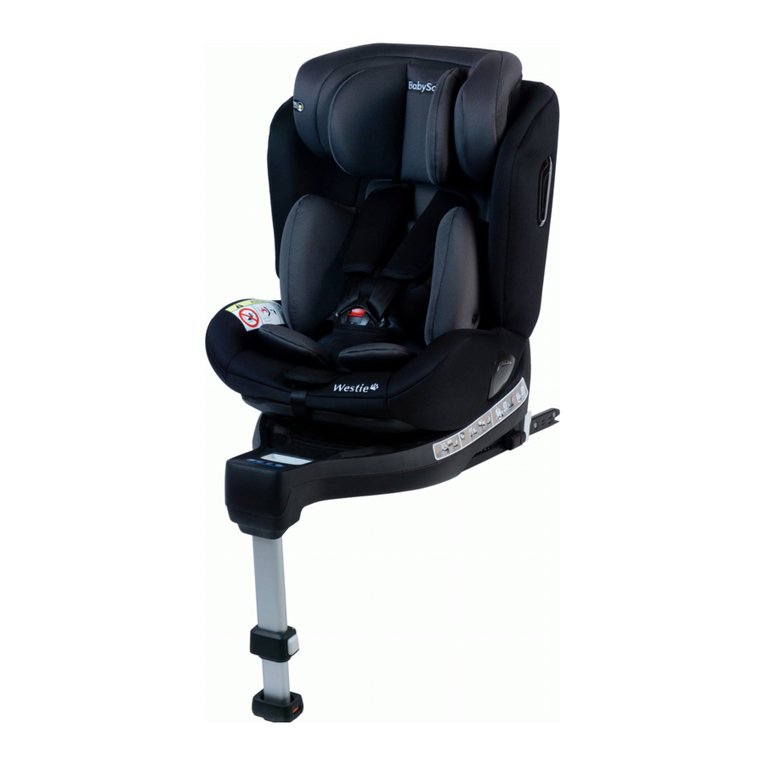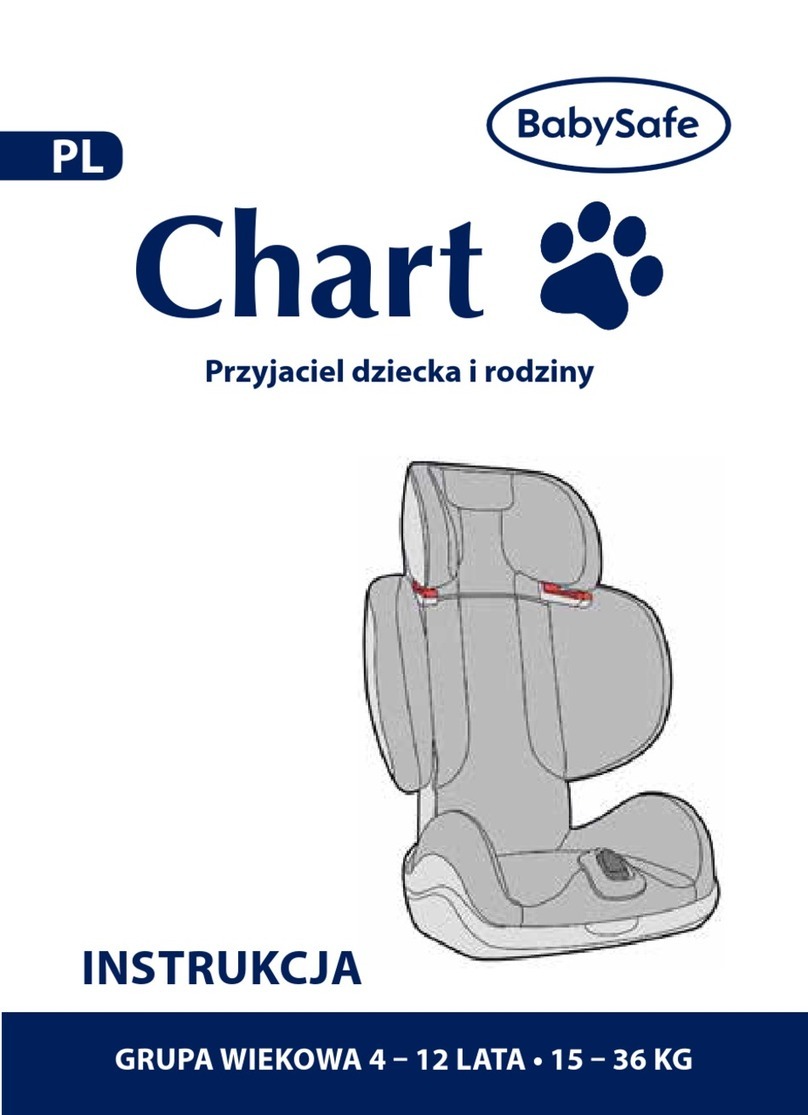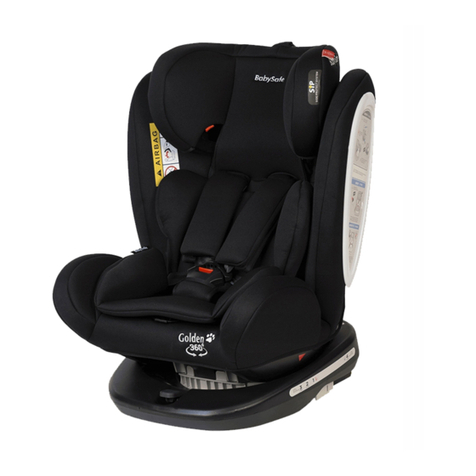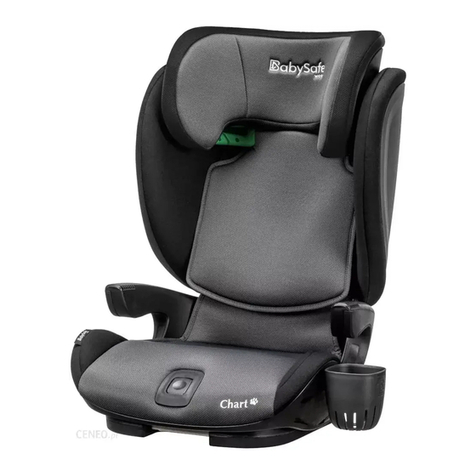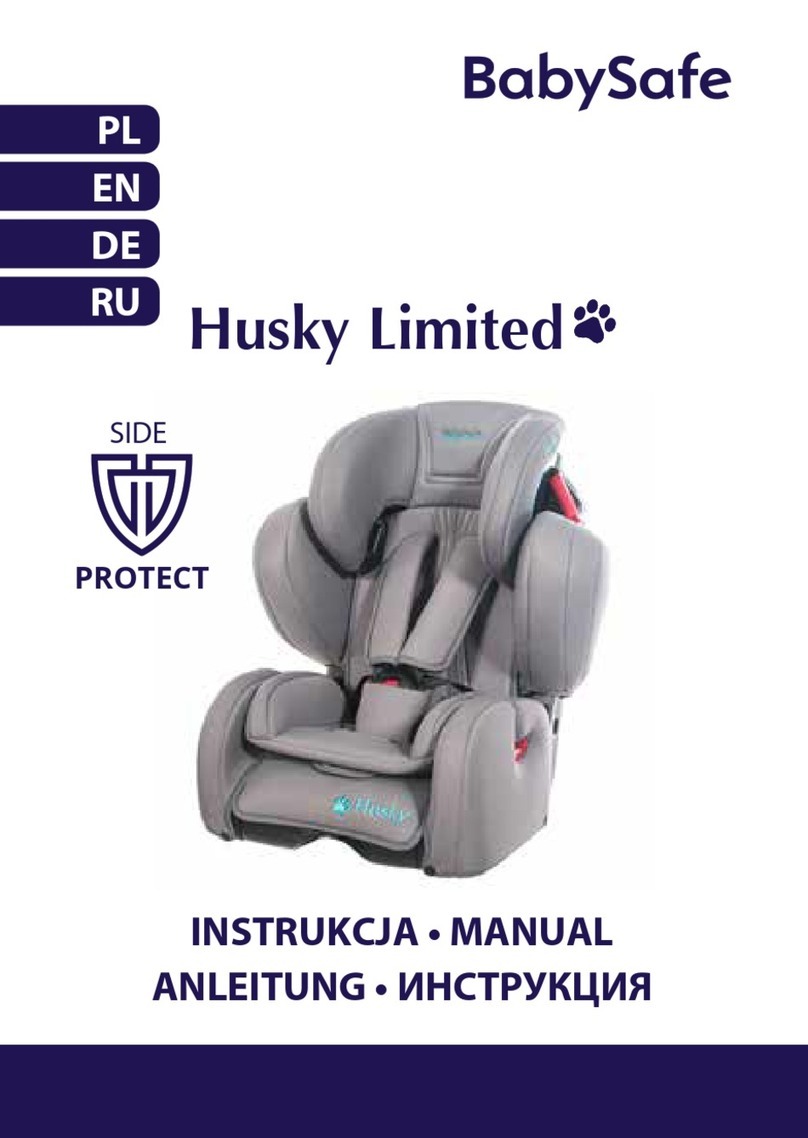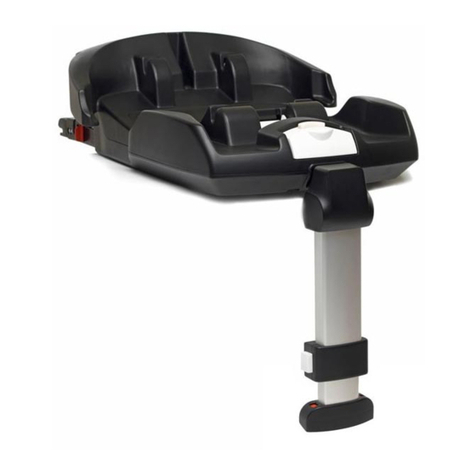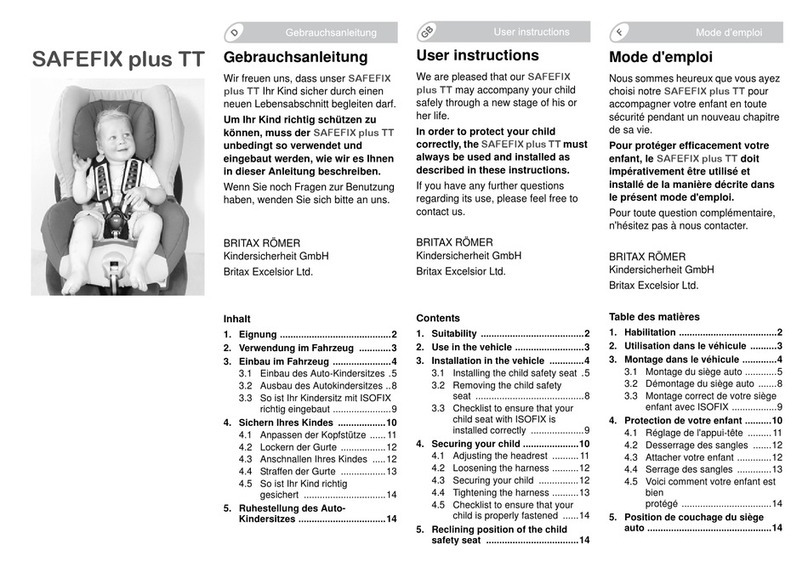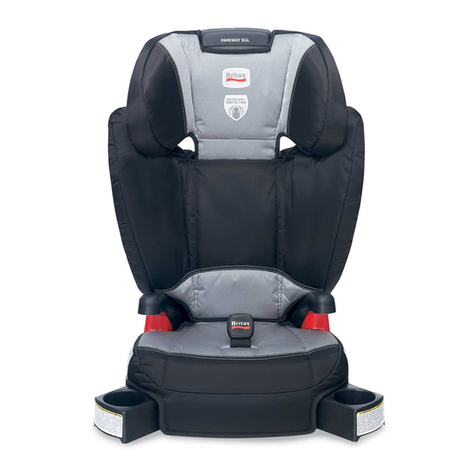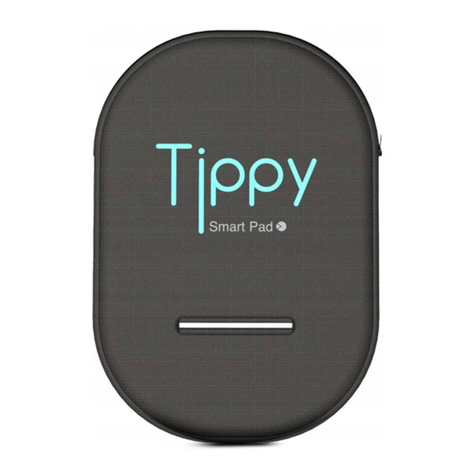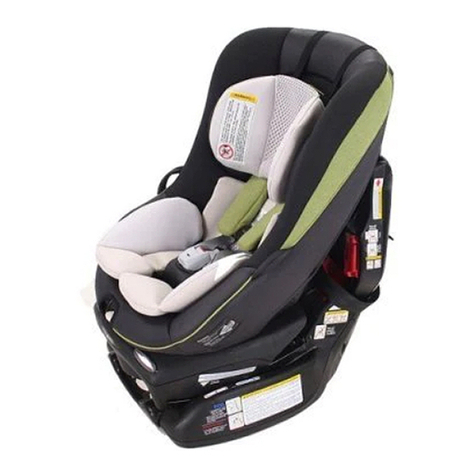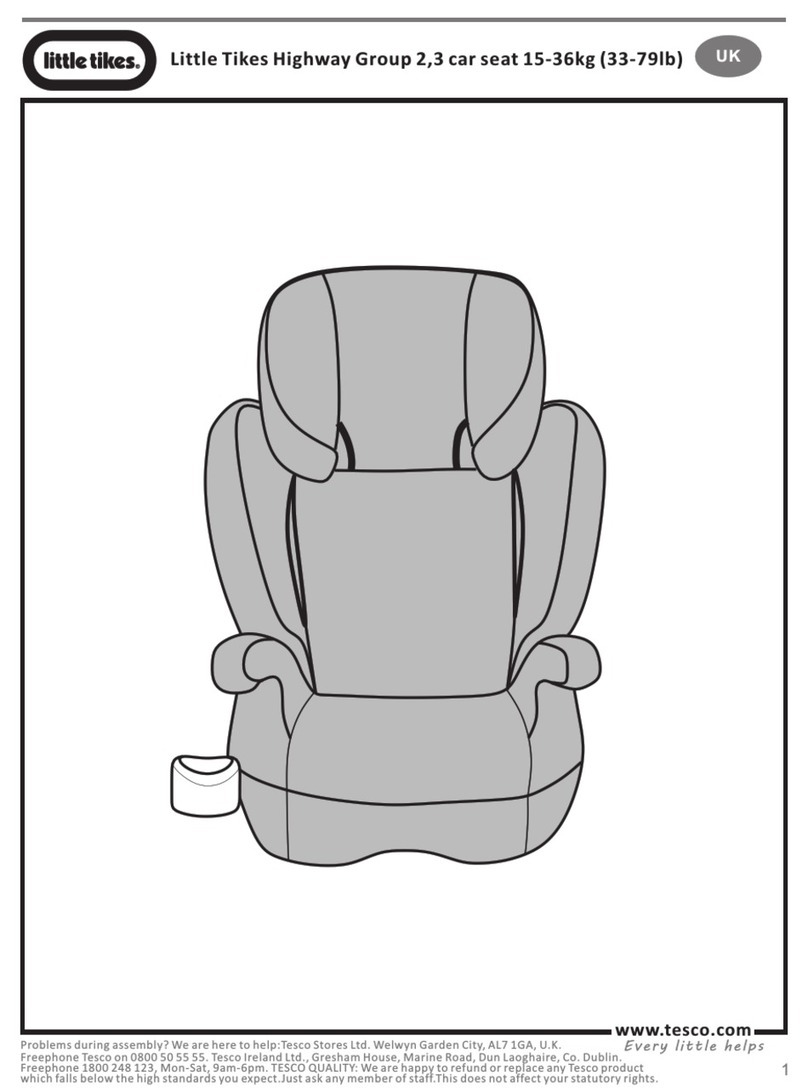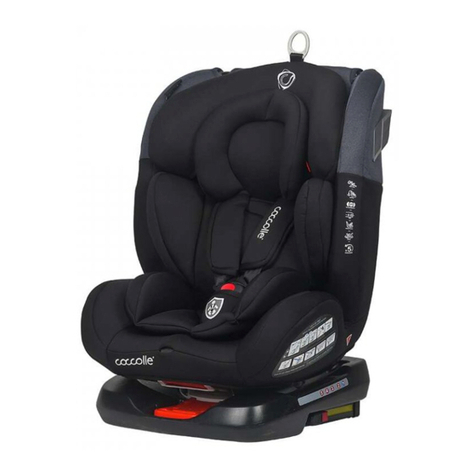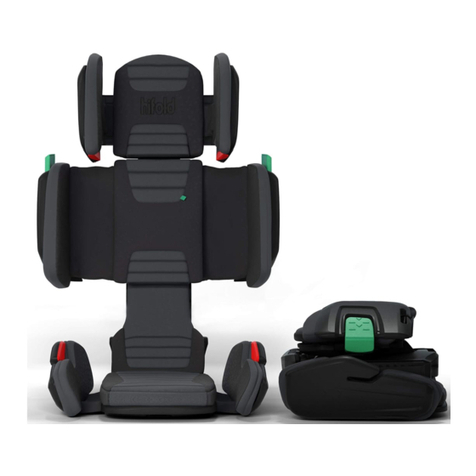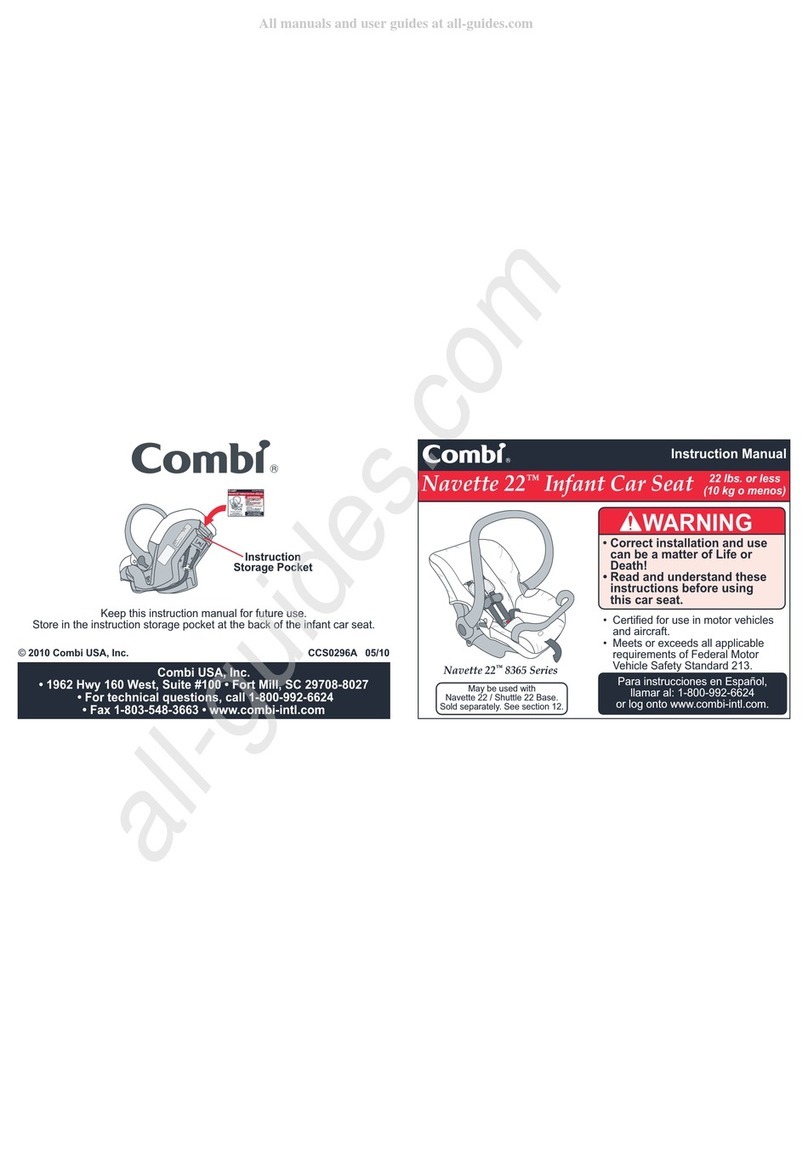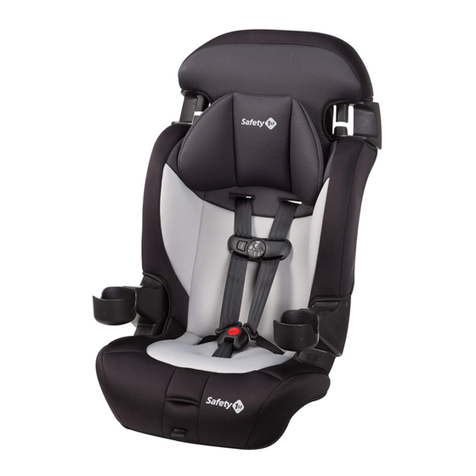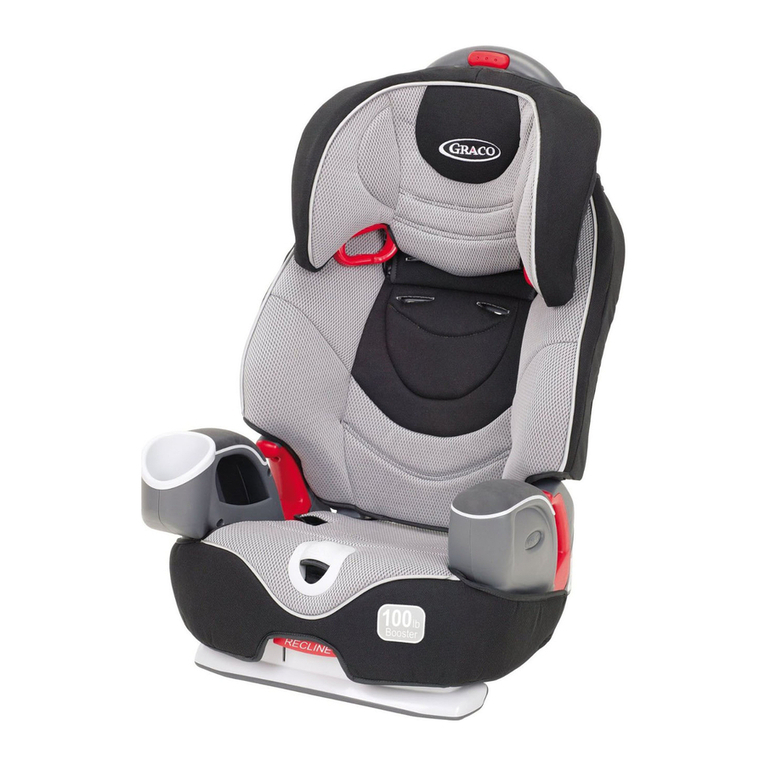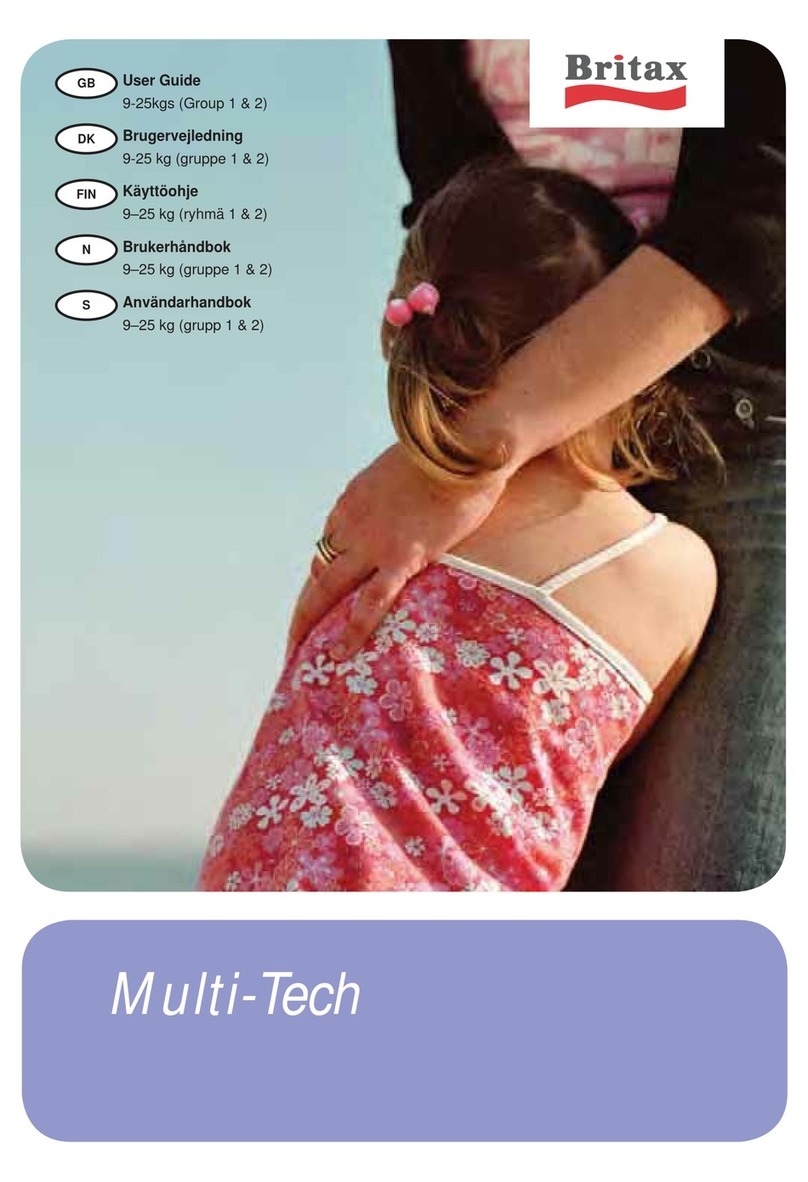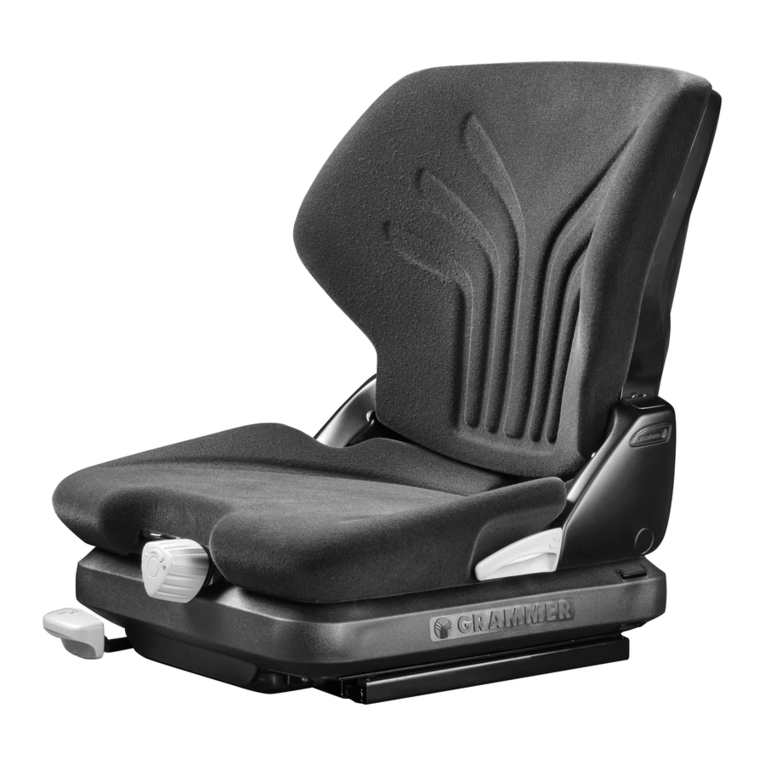
14 15
12. Make sure that the diagonal seat belt section 8 runs over your child’s shoulder
bone,and not in front of his or her neck.
Tip! You can still adjust the height of the headrest 01 again here in the vehicle.
CAUTION! The diagonal seat belt section 8 must run diagonally backward.You can
adjust the course of the belt with your vehicle’s adjustable belt deector.
CAUTION! The diagonal seat belt section 08 must never lead forward to the vehicle’s
belt deector. In this case ,only use the child seat on the rear seat.
For the safety of your child,before every journey in the car check that:
• the child safety seat is engaged on both sides with the ISOFIX locking arms 7 in
the ISOFIX
• attachment points 11 and that both green safety buttons 14 are completely
green ;
• the child safety seat is securely fastened;
• the lap belt section 10 runs through the light red belt guides 12 on both sides of
the seat cushion;
• the diagonal seat belt section 8 on the side of the vehicle seat belt buckle also
runs through the light red belt guide 12 of the seat cushion;
• the diagonal seat belt section 8 runs through the dark red belt holder 04 of the
headrest;
• the diagonal seat belt section 8 runs diagonally backward,
• the straps are tight and twisted;
• the vehicle seat belt buckle is not positioned between the light red belt guide 12
and the armrest of the seat cushion.
CAUTION! If your child attempts to open the safety buttons 14,make sure to stop at
the earliest opportunity. Check that the child safety seat is correctly attached and
make sure that your child is properly secured.Teach your child about the dangers
involved
To remove the child seat follow the steps in section 8
7.CARE INSTRUCTIONS
To ensure the full protective eect of child safety seat:
• In the event of an accident with an impact speed above 10km/h it is possible that
the child safety seat may have been damaged,but that the damage may not be
immediately obvious. In this case the child safety seat must be replaced.
• Please dispose of it properly.
• Regularly check all important parts for damage. Make sure that the mechanical
components in particular are all in perfect working order.
• To prevent damage,ensure that the child safety seat does not become jammed
between hard objects (car door ,seat runners etc ).
• Always have the child safety seat checked if it has been damaged (e.g. if it is drop-
ped ).
• Never lubricate or oil parts of the child seat.
• In order to properly protect your baby,it is imperative that you install and use the
Masti exactly as described in this manual
Disposal of packaging Container for cardboard
Cover Residual waste,thermal utilisation
Plastic parts In accordance with the labelling in
the designated container
Metal parts Container for metals
Harness straps Container for polyester
Buckle Residual waste
8. REMOVAL OF THE CHILD SEAT
CAUTION! Remove the child seat from the vehicle.The child seat must never be
transported in the car if it is not properly secured.
Group 2 and Group 3 (ISOFIX &Vehicle belt )
1. Release vehicle seat buckle if securing the child seat.
2. To release the ISOFIX fastening,squeeze the green safety button and the red rele-
ase button together,rst on one side,then on the other.
3. Slide the ISOFIX locking arms back into the seat shell.
